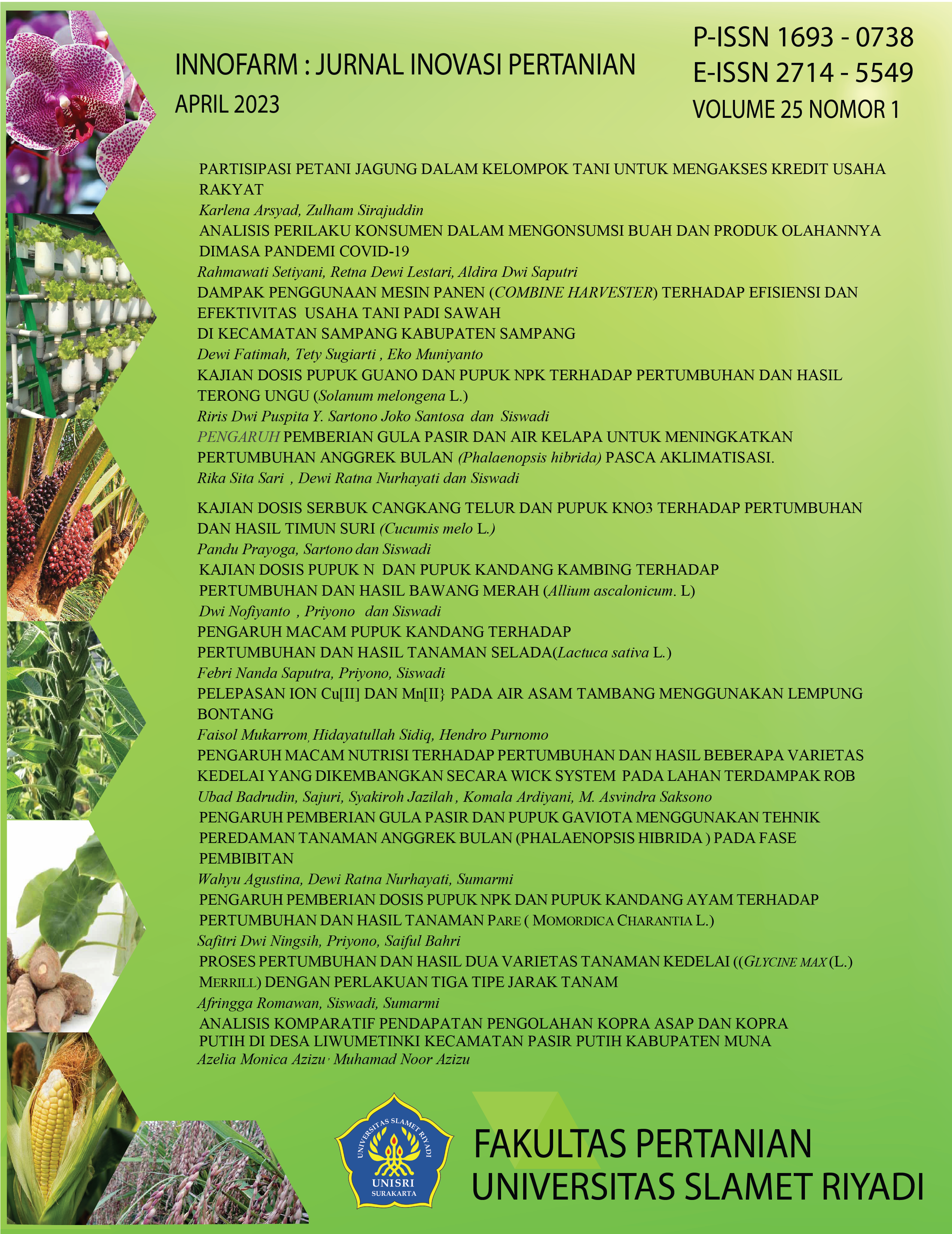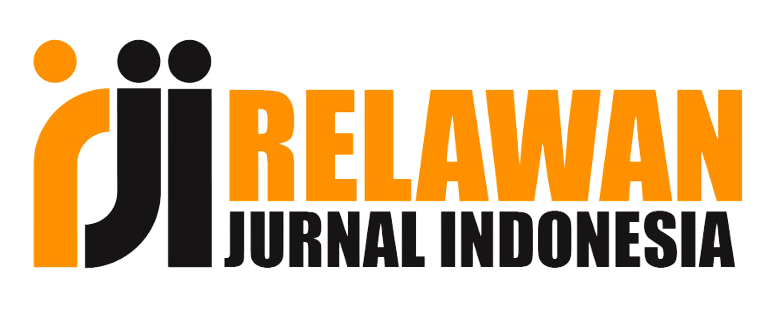RELEASING COPPER AND MANGANESE HEAVY METAL IONS FROM ACID MINE DRAINAGE USING BONTANG CLAY
Keywords: Bontang clay, mine waste water, copper, manganese
DOI:
https://doi.org/10.33061/innofarm.v25i1.8646Abstract
Clay mineral is known as a good adsorbent on metal ions. This study aimed to determine Bontang clay adsorption capacity on Cu(II) and Mn[II] heavy metal ions contained in acid mine drainage. In this study, Bontang clay was calcined at 600-700 ºC and characterized by Fourier Transform Infrared Analyzer (FTIR), X-Ray Diffraction (XRD), and Surface Area Analyzer (SAA). FTIR characterization shows the presence of active groups of silanol (Si-OH) and aluminol (Al-OH) act as heavy metal adsorbent. XRD characterization demonstrated the presence of montmorillonite, kaolinite, illite and quartz. SAA characterization revealed that after activation was greater than before activation, in amount of 34.793 m2/g for pre-activation and 49.859 m2/g for post activation. Calcination of Bontang clay improved the adsorptive capability of Cu[II] and Mn[II]. Maximum adsorption percentage of Cu[II] on raw and calcined Bontang clay were 96,53% and 94.67% at initial concentration of 10 mg/dm3 and they were 74.91% and 32.82 % for Mn[II. They decreased to 7.2% and 8.3% for raw and calcined Cu[II] and 4.3% and 6.8% for Mn[II] at initial concentration of 5,000 mg/dm3. The higher adsorption percentage is for lower concentrations for both Cu[II and Mn[II].
Downloads
Published
Issue
Section
License
Copyright (c) 2023 faisol Mukarrom, Hidayatullah Sidiq, Hendro Purnomo

This work is licensed under a Creative Commons Attribution-NonCommercial 4.0 International License.
Authors who publish this journal agree to the following terms:
- Authors retain copyright and grant the journal right of first publication with the work simultaneously licensed under a Creative Commons Attribution License that allows others to share the work with an acknowledgement of the work's authorship and initial publication in this journal.
- Authors can separately make additional contractual arrangements for non-exclusive distribution published by the journal (e.g., publish it in a book), with an acknowledgement of its initial publication in this journal.
- Authors are allowed and encouraged to send their work via online (e.g., in the institutional repositories or their website) after published by the journal.


















